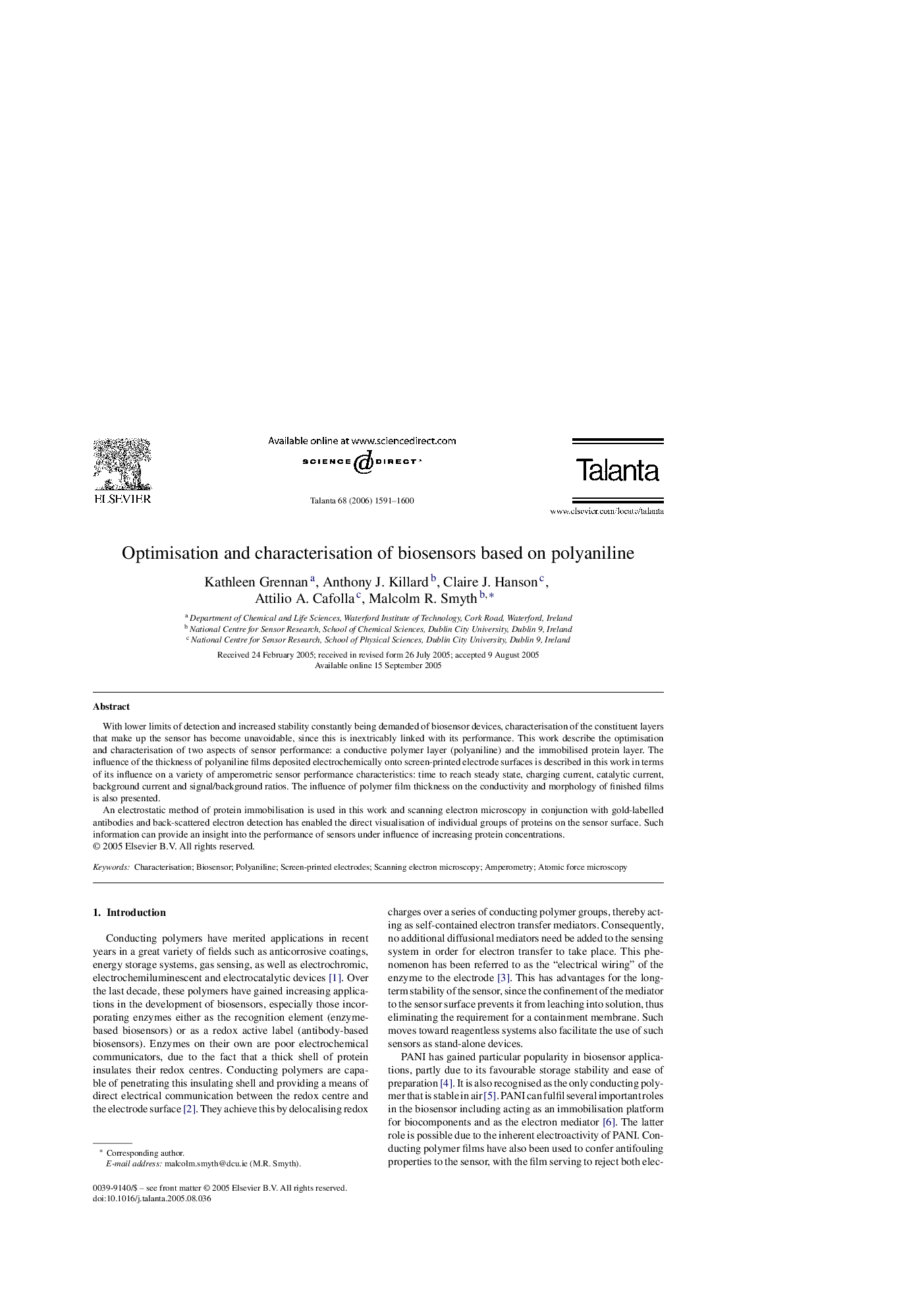| Article ID | Journal | Published Year | Pages | File Type |
|---|---|---|---|---|
| 1246577 | Talanta | 2006 | 10 Pages |
With lower limits of detection and increased stability constantly being demanded of biosensor devices, characterisation of the constituent layers that make up the sensor has become unavoidable, since this is inextricably linked with its performance. This work describe the optimisation and characterisation of two aspects of sensor performance: a conductive polymer layer (polyaniline) and the immobilised protein layer. The influence of the thickness of polyaniline films deposited electrochemically onto screen-printed electrode surfaces is described in this work in terms of its influence on a variety of amperometric sensor performance characteristics: time to reach steady state, charging current, catalytic current, background current and signal/background ratios. The influence of polymer film thickness on the conductivity and morphology of finished films is also presented.An electrostatic method of protein immobilisation is used in this work and scanning electron microscopy in conjunction with gold-labelled antibodies and back-scattered electron detection has enabled the direct visualisation of individual groups of proteins on the sensor surface. Such information can provide an insight into the performance of sensors under influence of increasing protein concentrations.
